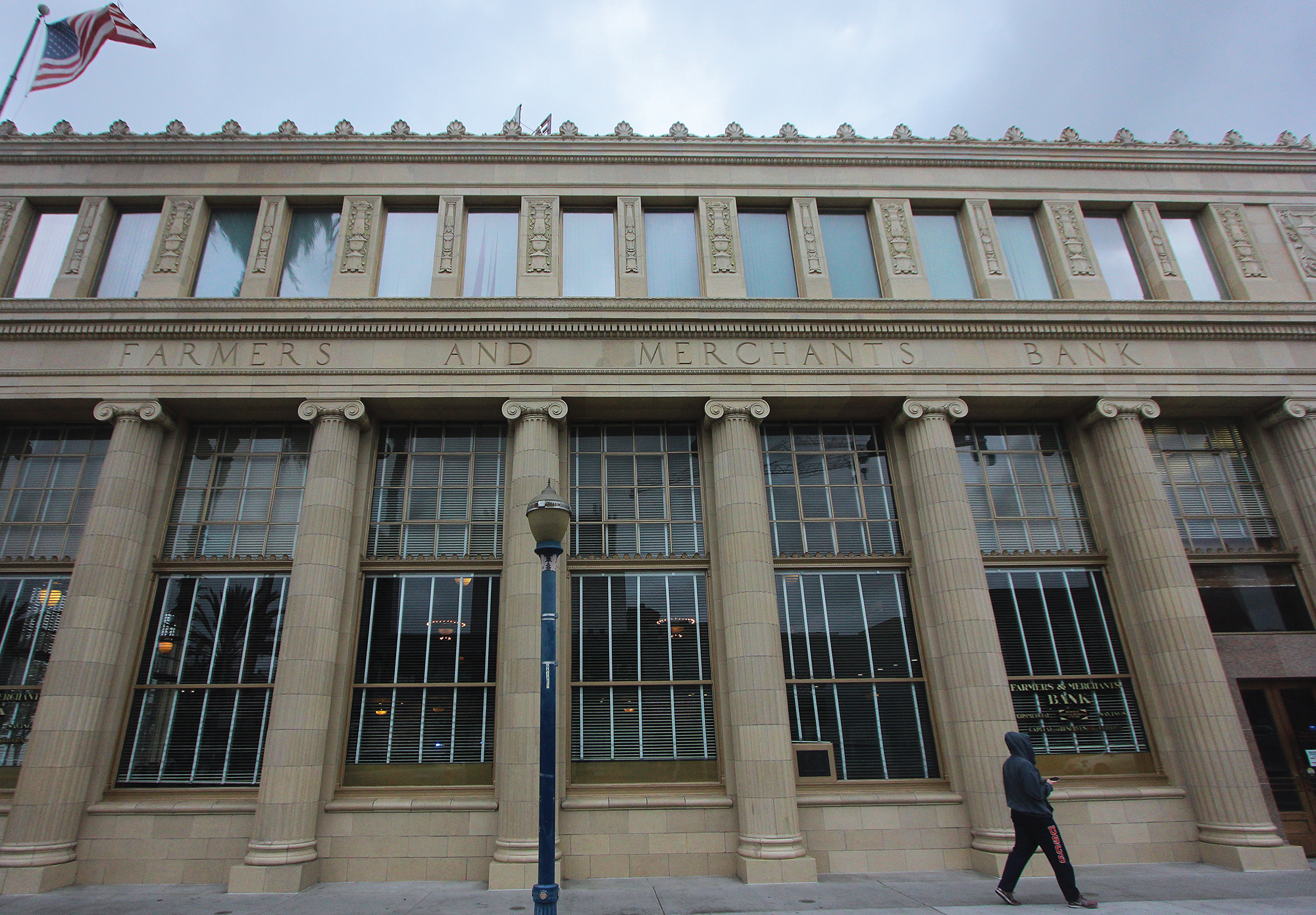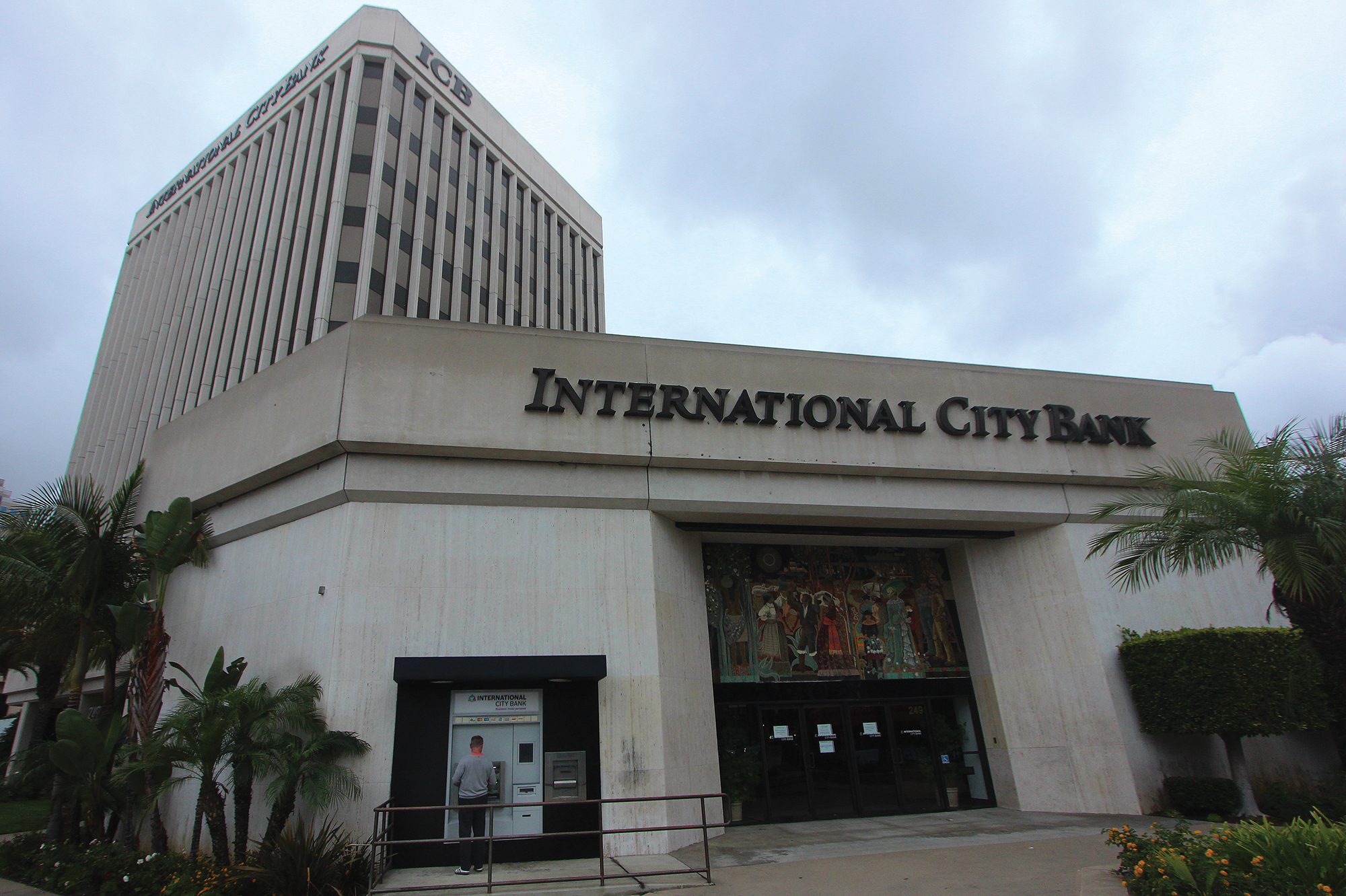
When COVID-19 emerged in early 2020, it threw every business and individual in Long Beach—and the world—into a perpetual fog of uncertainty that still has yet to fully lift.
The same was true for financial institutions, including Farmers & Merchants and International City banks, according to executives.
“From the beginning, we had some very important decisions to make,” F&M CEO Dan Walker said. “Do we close all of our banks? Do we leave them open?”
Ultimately, F&M leadership determined their 26 locations—from San Clemente to Santa Barbara—and employees were essential to the communities they serve. Staff with remote-friendly jobs began working from home (the bank purchased around 400 computers for these employees), and the rest remained at their respective posts to provide financial assistance to residents and businesses alike.
At one point, as many as 50% of F&M employees were working from home, Walker said. About 30% of F&M staff are still working from home, he added. For those working inside branches throughout the pandemic, Walker said he is proud to call them frontline workers.
F&M’s decision to remain open turned into a financial gain for the regional institution. On Jan. 1, 2020, F&M had $7.6 billion in total assets, according to Walker. Fast forward to today, and the bank’s assets have grown nearly 53% to $11.6 billion, he said.
International City Bank also saw substantial gains throughout the pandemic, according to Community President Paula-Rose Wihongi. The local bank saw its assets grow over 40% from $366 million in December 2019 to $513 million as of September.
The infusion of money through the various business and individual stimulus funds boosted F&M and other institutions, Walker and Wihongi said.
“We were one of the first banks in the state of California to begin accepting applications and funding PPP loans,” Walker said. “In the beginning, we were the No. 1 funding bank in the state.”
When the program was announced, F&M vowed to fund 100% of qualifying applications, Walker said, a guarantee larger banking institutions did not make.
F&M was successful in that venture. Walker recalled one instance where an employee approved a loan for $256 meant to cover rent, pay an employee and keep a business afloat.
“I scolded my employee for funding that loan because it cost me $400 to fund and collect,” Walker said, laughing. “I said, ‘Next time you get one for $256, call me and I’ll just write them a check.’”
Within the first 100 days, F&M funded 4,500 loans for a total of $764 million, Walker said. In the second round, the bank backed an additional 2,350 loans totalling $376 million. While some stimulus loans were up to $8 million, Walker said about 75% were for $150,000 or less.
While the stimulus packages accounted for about $4 billion of F&M’s growth, the other $3 billion came from a new customer base and existing customers, Walker said.

ICB’s focus is small business, Wihongi said, so the start of the pandemic sparked fear for its customers at the bank. But the government came through for entrepreneurs with the PPP, she said.
“It gave small businesses a shot in the arm,” Wihongi said. “And as the pandemic prolonged, our small businesses pivoted very well.”
ICB completed about 192 PPP loans totaling about $40 million, Wihongi said.
Small local and regional banks are important because they have a vested interest in the success of the communities they serve, Wihongi said. The employees and executives of these institutions often live in the area and patronize the businesses, meaning they understand the local needs and climate better than corporate banks, she said.
That understanding and presence allows local and regional banks to form stronger and more insightful relationships, Wihongi said.
The pandemic forced F&M to expand its digital footprint, Walker said, noting that comprehensive mobile banking became even more important over the last two years. But cell phones can never fully replace employees, he said.
At the start of the pandemic, F&M had 785 employees. Today, that number declined to 760, according to Walker, who said employees left at a regular rate for normal reasons—moving out of state, entering a new field and retiring.
“We haven’t been able to replace them as quickly as they dropped off, but I didn’t have a mass resignation,” Walker said, adding that the bank has not mandated COVID-19 vaccinations. “We recognize the relationship, the face-to-face, is still greater than what we can accommodate and complement from the digital side.”
And the company’s focus on personalized customer service has paid off. Last year, the first, second and third quarters saw a 48% increase in new accounts year-over-year, according to spokeswoman Amanda Ernest Fuller. Of those new accounts, 47% were business-related.
With many economists anticipating the Federal Reserve to begin raising interest rates as early as July of next year, Walker said inflation is a key deciding factor to watch.
“If inflation continues to rise, they’re going to pick the interest rates up a little bit earlier,” Walker said. “But I suspect the inflation we’re seeing right now will slip off. So we’ll probably be in the fourth quarter when the interest rates start to increase.”
When interest rate hikes do begin, Walker said it would be so gradual that the impacts would not be felt immediately.
The looming threat of increased interest rates, however, could result in a boom in lending even before the year’s end, Wihongi said. Ahead of increased interest rates, Wihongi said it’s common to see an uptick in real estate deals.
“Lending increases because people want to buy now when the rates are low to lock them in,” Wihongi said. “We’ve seen that happen in cycles over and over again.”
The cause of the cycle—the pandemic—is not normal, Wihongi admitted, but she still expects the same behaviors from business owners.
Even if that lending spike never materializes, ICB is closing out the year on high note following its merger with Indiana-based United Fidelity Bank, which was completed on Nov. 30. Wihongi stressed that the transition would not alter the bank or its mission in any way. In fact, she said, the merger will allow ICB to make larger loans and offer services it previously did not, including Zelle.
“We are so entrenched in this community, we’re not going anywhere,” Wihongi said. “Our culture remains the same; our focus is still on the Long Beach community. That will not change.”
